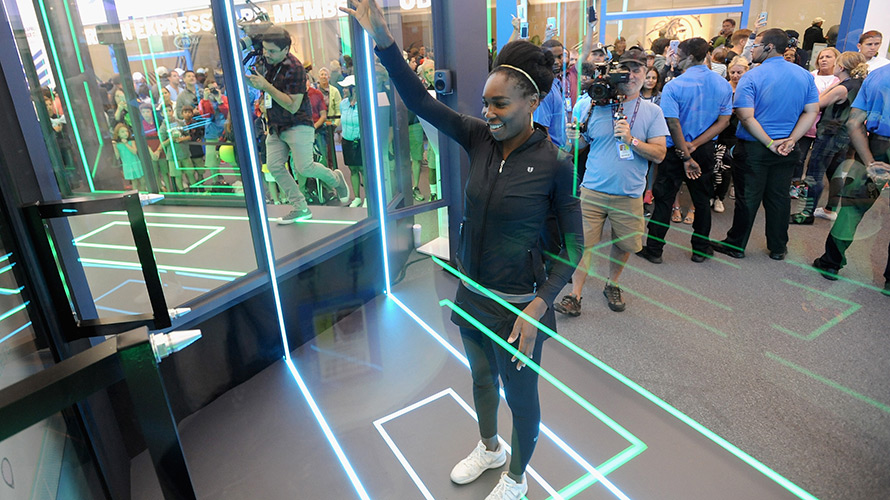Brand Strategy Activation: How to Develop Experiential Marketing Campaigns
November 8, 2019
Companies that incorporate experiential marketing into their brand positioning strategy are more likely to spark curiosity and build loyalty among their target audience.

Sometimes marketing can seem like a cat and mouse game: brands try to attract consumers with high quality content and advertising, while consumers install ad blockers and unsubscribe from newsletters. This means marketers are continually on the hunt to find new ways to connect and engage with consumers, and many are turning to experiential marketing.
Experiential marketing is a valuable strategy that uses live experiences to forge authentic bonds between your brand and consumers. It gives marketers an entirely different way to capture audience attention and build customer loyalty. Instead of telling them about your brand, you’re asking them to be part of it.
Experiential marketing is key to your brand positioning strategy
For marketers struggling to devise new ways of surprising, delighting, and bringing value to their audiences, experiential marketing is a great tactic to keep things interesting and interactive. Deployed successfully, in fact, experiential marketing has the potential to become a key part of your brand positioning strategy and differentiate you from the competition. As we’ve written before, the best brands — the ones consumers can’t live without — are authentic and electric. Authentic, because a genuine commitment to your brand’s values fosters essential trust. Electric, because that trust will go to waste unless you’re able to ignite continued consumer passion.
Experiential marketing is designed to help you embody both of these attributes. After all, what better way to prove the sincerity of your brand promise than by inviting consumers to take a look inside? And what better way to create a spark than by constructing an opportunity for real connection? Done right, experiential marketing makes it clear that your customers mean more than the potential revenue they represent.
How to develop your experiential marketing strategy
1. Understand your current customer experience
In order to figure out experiential marketing campaigns that will resonate, review foundational knowledge on your existing and prospective customers. Do a deep dive on all existing data you have, and use this information to fuel brainstorming sessions on live experiences that might connect. Existing data could include:
- Analysis of your customer database and trends
- Primary research on your target audience
- Category landscape analysis
- Customer segmentation research or moments segmentation research
- Internal stakeholder interviews
Note, if you’re missing any of these foundational research inputs, a consumer insights or brand strategy firm can help.
It’s also useful to consider the customer journey. Where are the touch points that present the best opportunity for engagement? At the start, you might not know — and if that’s the case, experience mapping can help. As the name implies, experience maps are designed to visualize all the ways consumers interact with your brand. In short, they help organizations see the bigger picture from the customer’s point of view. And when you understand the customer’s POV, it’s much easier to identify where to engage them with experiential marketing.
2. Understand key changes and trends in your customer’s world
To better understand how your brand can fuel experiential marketing engagements, explore the cultural forces impacting your brand and category. This will enable you to identify the cultural shifts you want to lead, and the trends you can tap into. A great tool to identify these changes and trends is:
- TrendScans: TrendScans are designed to help your brand understand the market forces and cultural trends that influence the ways your customers think and make decisions — insights you’ll need when identifying innovative experiences with the potential to resonate.
3. Define your brand experience
It’s important to have a clear definition of your brand experience overall, so you can identify how that would translate in a live setting. Because even if you know where to engage your audiences, that doesn’t mean you know how. To crystalize such a definition and better understand how your brand can fuel experiential marketing engagements, we recommend exploring:
- Ethnographies: Ethnographic interviews allow you to dig deep via one-on-one conversations with customers to gather important information about the intersection of consumer passions and engaging brand experiences.
4. Spark ideas: Discover what’s worked for other brands
A brand doesn’t need to offer an experience that directly relates to a product or service. At the 2017 U.S. Open, for example, American Express encouraged fans to play a game of air tennis against an A.I. opponent, which in turn prompted consumers to associate Amex with a fun memory, not just as a practical tool to purchase tickets or sodas.

That said, experiential marketing absolutely can be used to get customers to interact with products in new ways. Just this month, Kohl’s launched a holiday pop-up with a clever twist. Those in New York City can visit in person, while others around the country are able to use a Snapchat portal lens to shop in a fully-3D recreation of the store.
Really, there are no limitations to how experiential marketing can be used to create a variety of different experiences. Just take a look at what women’s lifestyle brand Refinery29 has done with an ongoing campaign called 29Rooms. An eclectic range of brands, artists and nonprofits are given a space to work with, inviting audience engagement and collaboration. “Be the Spark. Live with Heart. Turn it into Art” is the theme of this year’s events.

With its #WeighThis campaign, Lean Cuisine asked women to ‘weigh in.’ But instead of literally measuring their body weight, women named educational, personal and career accomplishments as a better method for women to ‘weigh’ themselves. The campaign went viral and enabled Lean Cuisine to link its brand with uplifting ideas of self-affirmation instead of weight loss struggles.
And then there’s Google. Recently, the company launched donut pop up shops in the UK and US, which featured free Google Home Minis as prizes (with the slogan “size of a donut. Power of a superhero”). Google’s innovative experiential marketing campaigns also include the Google Assistant Ride, a theme park attraction at CES 2019 designed to showcase its virtual helper Google Assistant.

Your brand positioning strategy in the era of experiences
Consumers now often choose experiences over material goods. Many prefer cooking lessons to expensive new suits, and flaunt travel and culinary adventures on Instagram instead of fancy jewelry or flashy cars. Brands that use engagement marketing to create unique and fun experiences are more likely to spark curiosity and build loyalty among their target audience.

